Some of my sourdoughs end up with a whitish manifestation in the form of little prickles of white. Sometimes there is a thin layer of white above the bottom crust. Sometimes, when you bite into the crumb, although the texture seems fine, the crumb turns white suddenly and then reverts to it's previous structure but remains white along the gluten strands. Something similar to what's seen in "this poster's" photo, looking closely at the thin white layer on the bottom: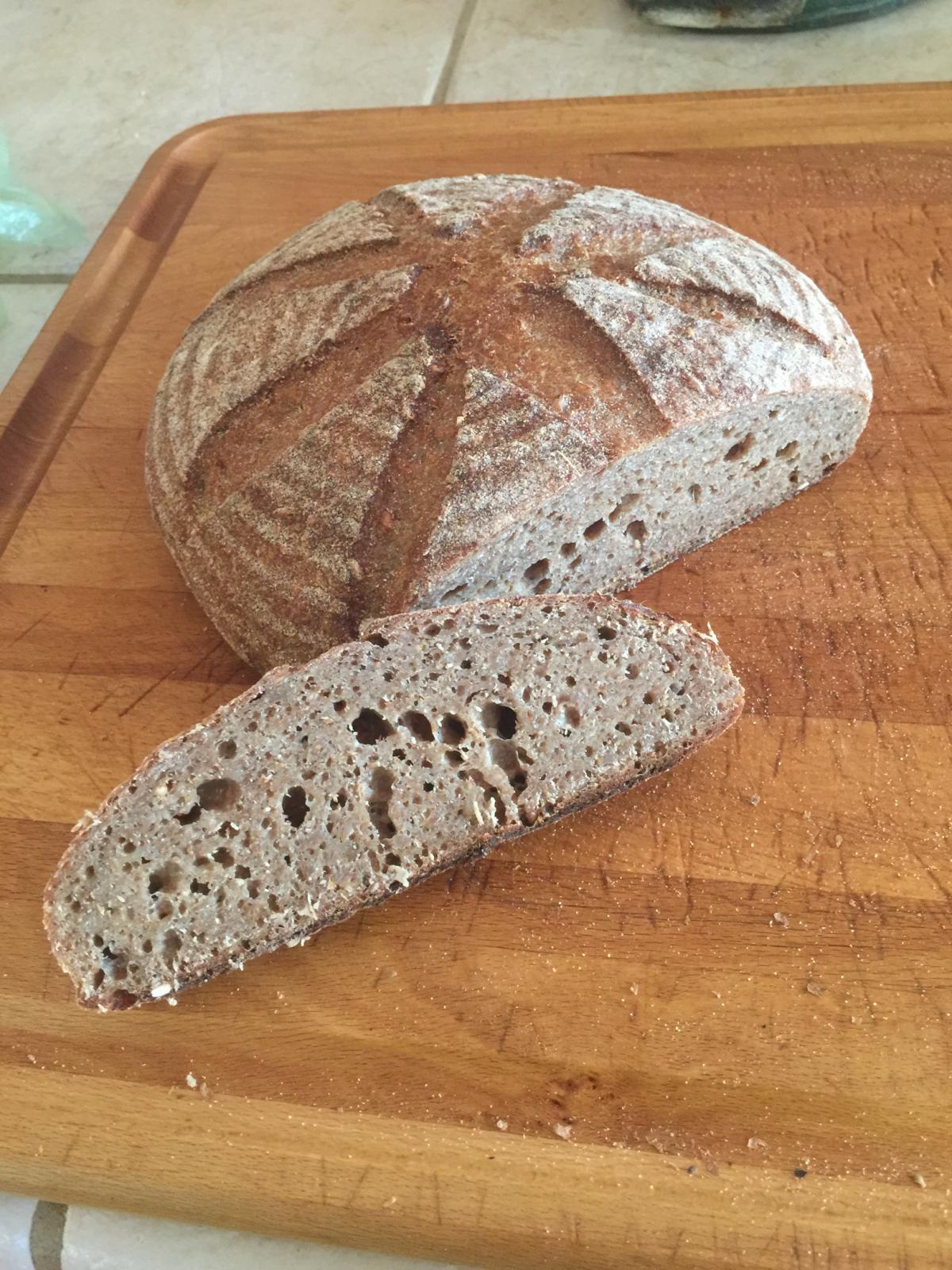
This latest batch of sourdough focaccia I've made has a normal looking focaccia crumb (although, I believe I may be underproofing my sourdough on account of it usually being a very wet dough and not having much experience with sourdough at this point?), but it turns particularly white when you bite it and also has a thin white layer on SOME parts of the bottom. My goal was to make this batch of sourdough particularly strong and vinegary, and--boy!--it tastes like vinegar and stings my tongue a little bit, but I love how the taste overpowers to olive oil, just as I wanted.
White flakyness to the crumb?
Possibly underproofing as well? Seems rather very closed for my typical focaccia and sourdough focaccia. I did you more olive oil this time than ever before, on the other hand. Do higher levels of acids require a longer fermentation time, or in general subdue proofing? Perhaps I'm under-kneading.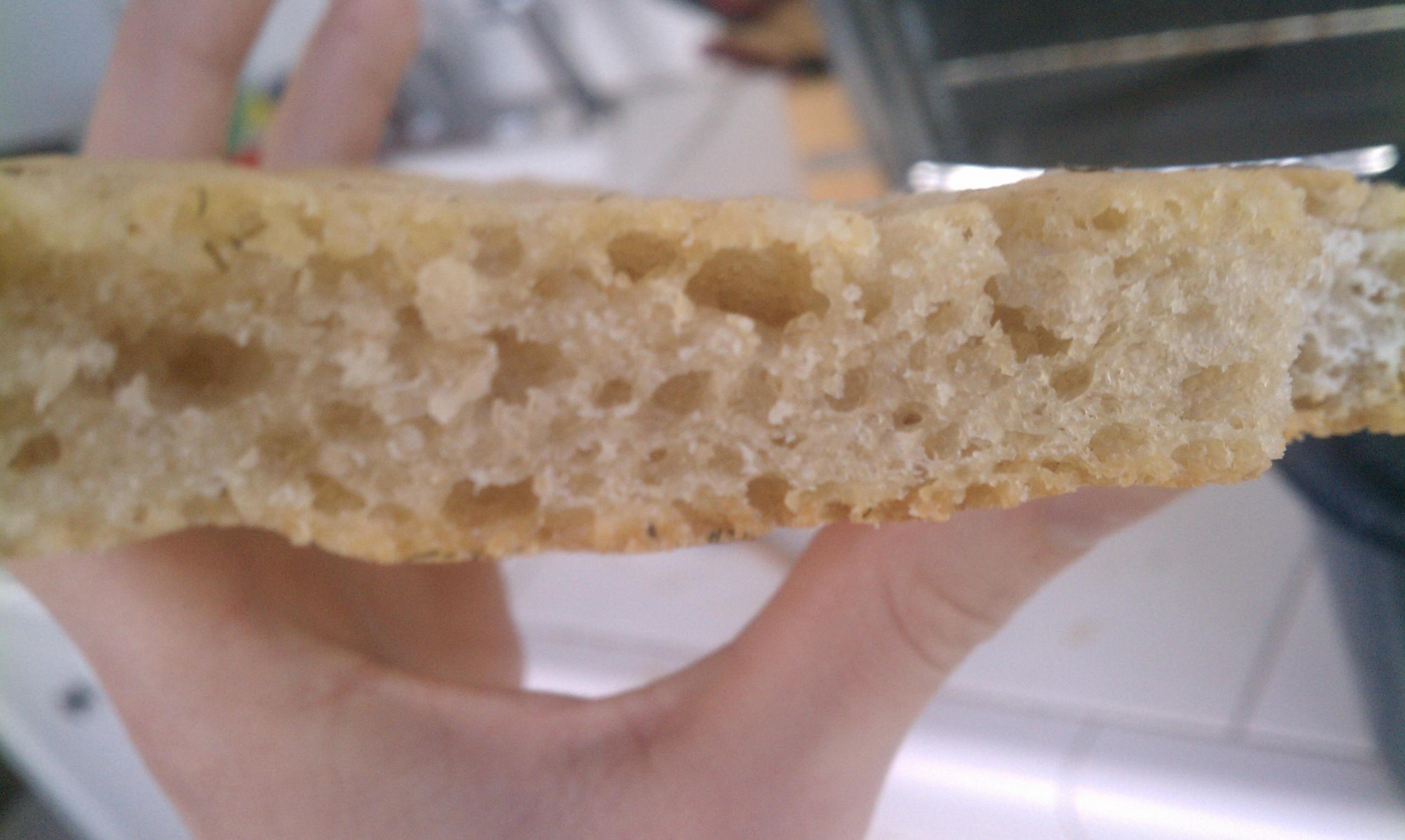
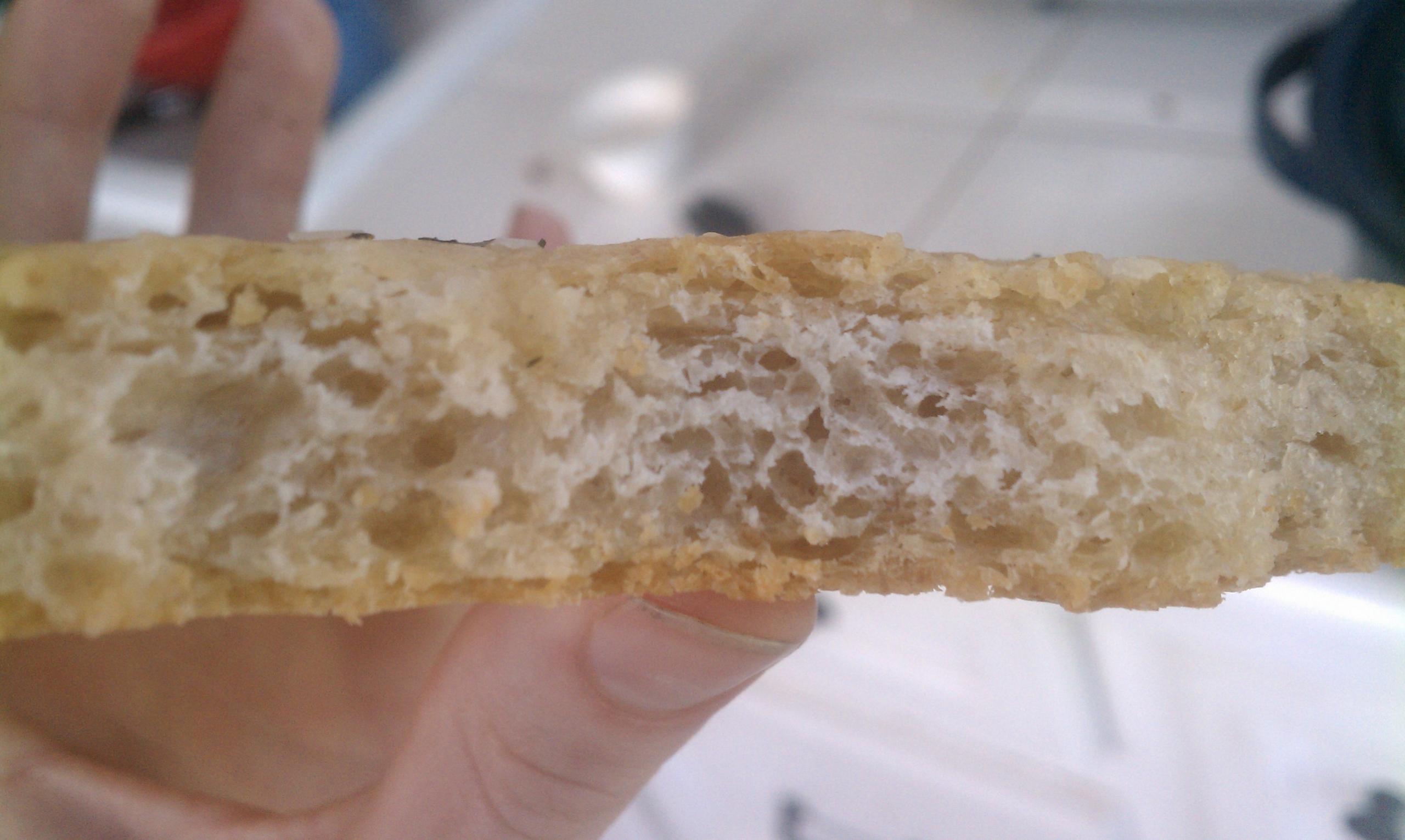
The last sourdough batch I made didn't exhibit the whiteness. It too, however, seems underproofed, but what do you'n think? The acidity was way lower but, of course, from the same starter. The flour I used for the focaccia was not my usual KA all-purpose/bread combo, because I was out I used some all-purpose unbleached Gold-Medal that I had. I suspect that the protein level isn't as high, and also the gluten didn't form easily, or apparently from the crumb there was not a lot of gluten in the flour--despite my dynamic efforts to strengthen the dough (a stiff and worked dough, combined with the sponge and then stretching and folding and SF SF SF SF SF SF etc...)
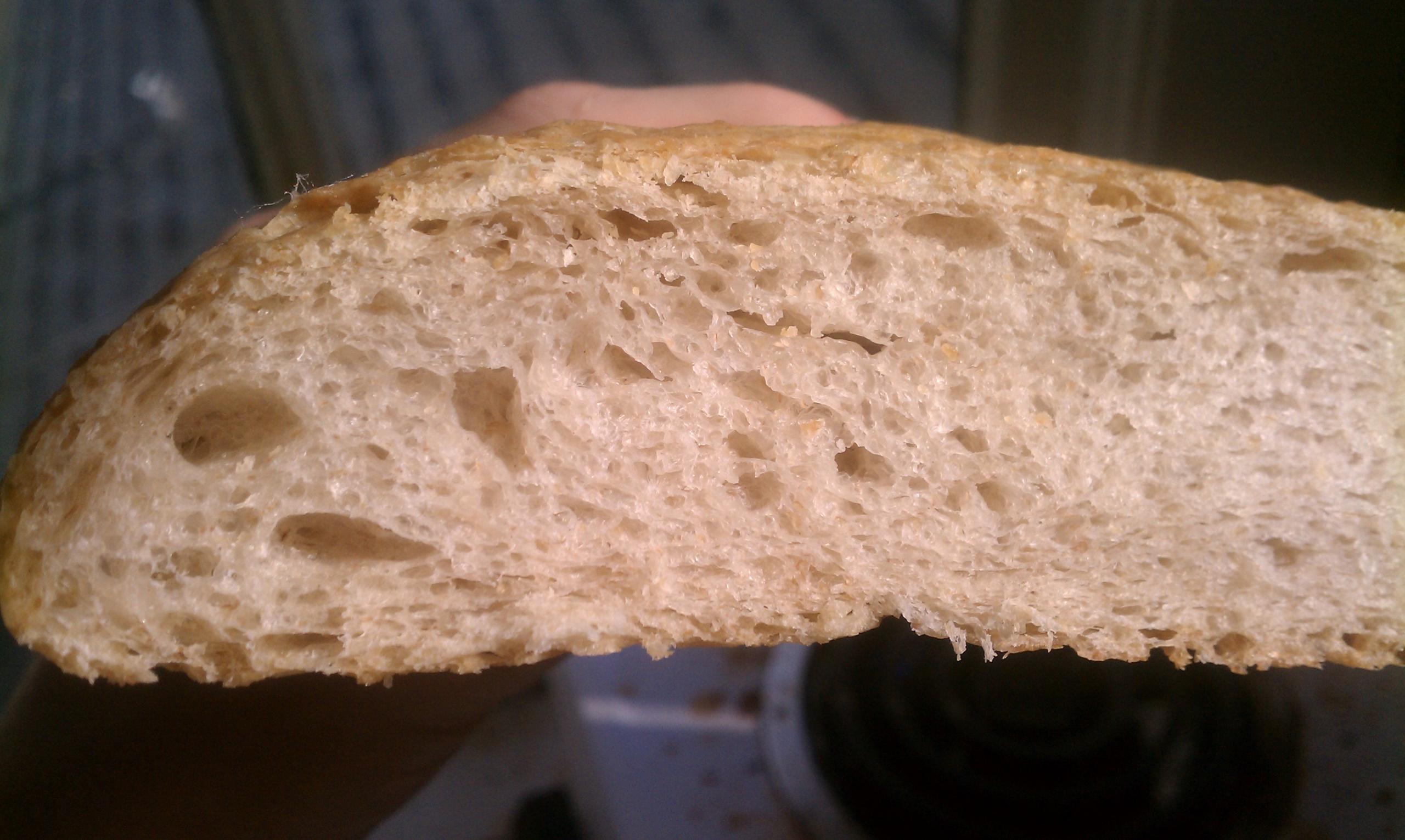
P.S. I'm thawing a piece of the ~75% WG to show the whiting phenomena of that crumb as well. Sorry for my low quality phone camera.
Starch Retrogradation
Maybe what you are seeing is the crystalline structure reflecting light making it appear lighter or "white."
I'm sure steam, ingredients and surface treatments all come to play a part.
I tried to post a link to the wiki but it switches to geology, so type in Starch retrogradation and get to the correct page. Read it thru and see what you think? All the things you mention like acid, oil etc are also mentioned.
But here's pictures of the first loaf, which is the other half of the dough and is thicker and easier to see. Here it is before you bite into it and after you bite it:
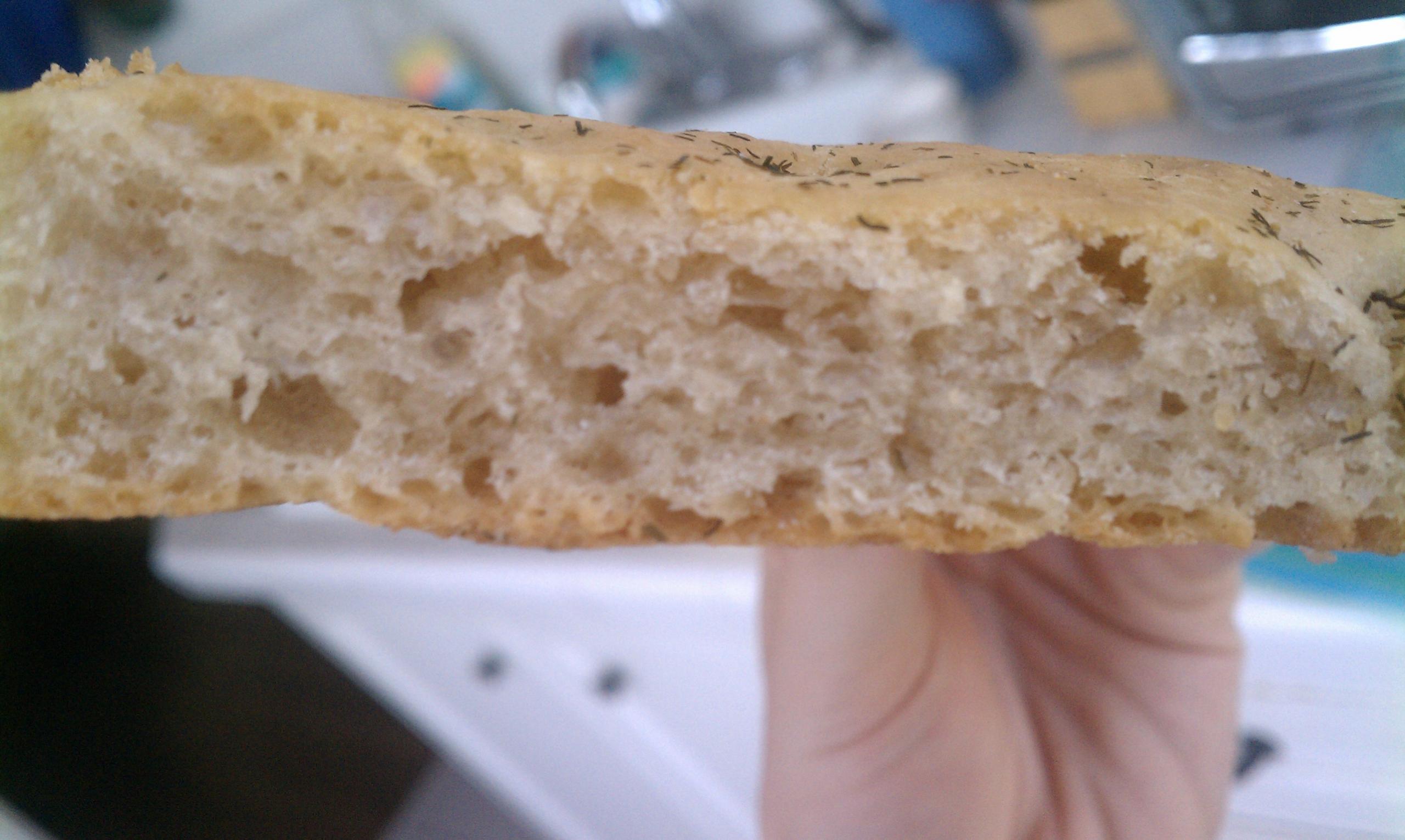
They taste like someone rubbed alcohol or sake on it, but it also tastes very, very milky. When I taste the milkiness and I see the white throughout the crumb, it makes me think it's high acid concentration? I don't know enough about the chemical transformations that go on with the bacteria and their byproducts when putting a sourdough into the oven, so I can't even speculate personally as to what I'm seeing and tasting. But the flavor is like medicine, almost, yes very stingy-tangy, but also like there's milk in the dough (which of course there's none). Because of the sourness it tastes a lot like sour cream, but then also tangy high-alcohol wine. The starter sponge prefermented for about 12 hours, all night and then a few hours in the morning, and that's a time of rapid warming and humidifying here in Florida. It stings a little bit for awhile like you ate a lot of vinegar, It tastes good though.
I want to ask about steam. I think I might be over humidifying the oven. Steam seems to rise right out of my oven's eyes, so I get paranoid about it, and not wanting to open the oven to release steam makes everything worse. So, I put two small pans in the bottom with a small amount of boiling water and I mist the oven before inserting, and then a small glass of water on the bottom afterward, but this time I also misted again and I also left the pans in the entire time. They didn't bake very long because they are so thin this time, and the stone was hot. Do you have experience with the effects of excessive moisture on the sourdough? Like I said, this didn't happen with my last loaves but it sometimes happens.
My imagining is, maybe the excess moisture made the dough more "sticky," as it seems to want to mush together but then retains it's shape anyway, and maybe that makes it easier to see the concentrated "whatever-it-is" making the crumb white. I feel like excess moisture treatment may have really altered the consistency of the crumb, because--although I've seen the strange whitening before--the focaccias have never turned out this... they're not gummy, but they seem heavier somehow, more cohesive that they should be. I realize there is a combination of factors at play, but I tend to do the same linear scenario with the same bread over and over to make my basic breads better and more consistent to what I want, and the consistency of this dough seems like an anomaly to me for that reason.
Today I'm making the same dough but without any olive oil, and I'll be fermenting the preferment relatively a few hours less. And I'm just making a boule so get a more blown up perspective of what's happening. This time, I'm going to reduce this humidity a lot and remove the pans after 15 minutes, probably.
P.S. I also olive oiled the parchment a little, which I don't normally do. Could also be part of the anomaly.
P.P.S. I don't know exactly what the percentage of flour is in the preferment. It's 50% of the water. I try to use the 1:2:3 ratio, and the sponge is not 100% hydration, but retains a thick, glue-like batter consistency to it and traps bubbles pretty completely while fermenting. After 6 hours, if you mix together then it will double in size again in a very short time, 45 minutes if it's daytime, maybe an hour. Should I cut the preferment time short? Is eight hours even two long?
I feel like yeast-baking in Florida is very different from most places in the U.S.. In the winter things seem more like they are with most other bakers, but then in the spring and summertime (which also includes part of spring and much of fall here), things seem to get all Wonderland-like and pretty confusing. I know one thing, all yeast cultures love it here, including wines, and the sourdough starters. It's very easy to get 'em going. All forms of bacteria seem to have a huge potential here.
I agree, although the short info is a little wordy for a chemical layman. As for the boule... I'm at a loss. There is definitely a proofing issue going on with my sourdough and I can't make heads or tails. I stopped the preferment at 8 hours-- a bit over, because it was really getting warm yesterday morning-midday. I then tried proofing in a towel in a bowel for the first time (like a banneton). I well-floured it and it didn't stick, and the boule rose perfectly in it, more than doubling. I will say, this is not the best flour for bread. You can tell just by working with it after autolysing.
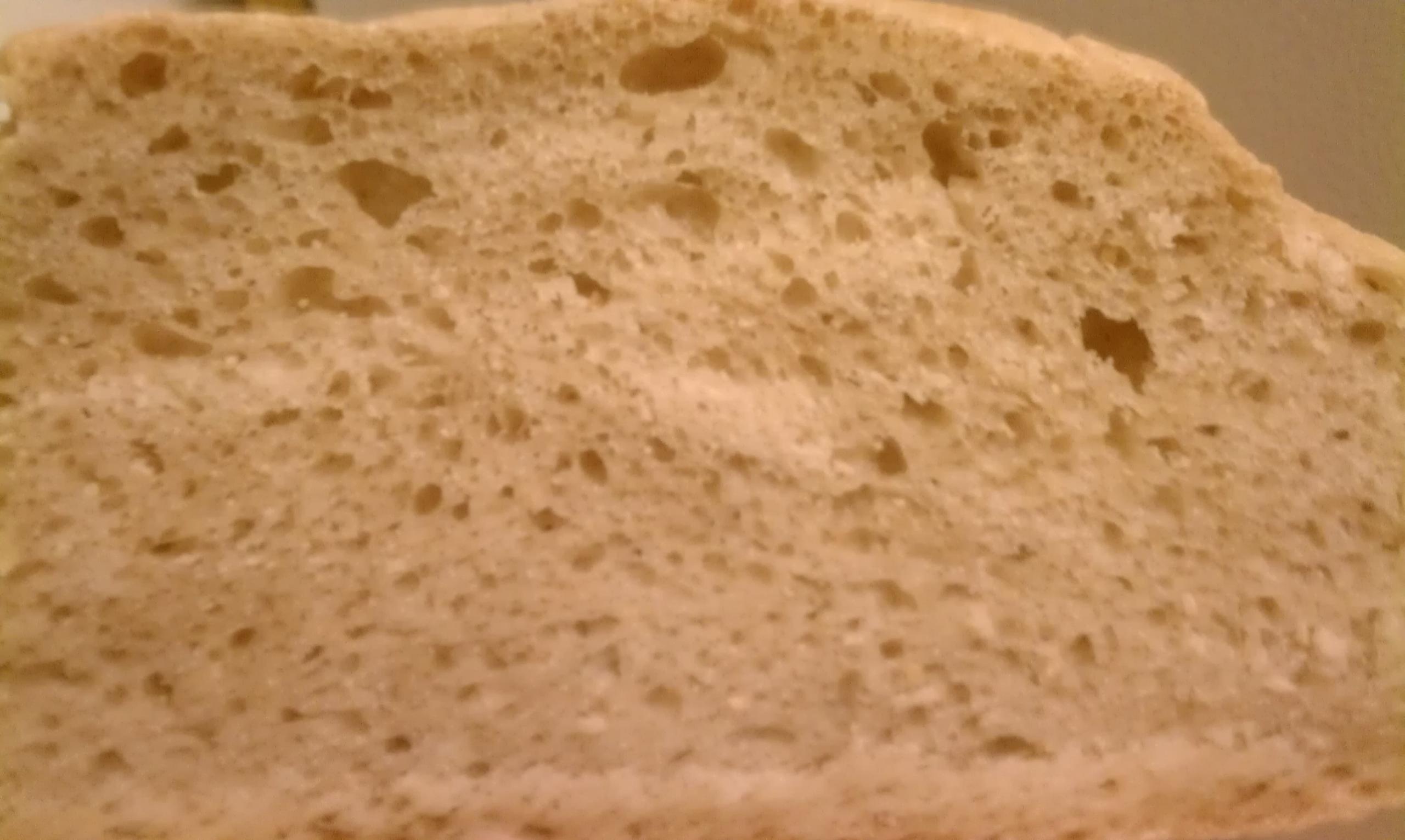
Problem is, there was a thin floury skin on it that effected the crust. It still expanded, it didn't turn into the dry ruin-your-crust skin, but I was surprised. I think I should have proofed it seam-side down in the bowl so that the flour ended up on the bottom of the loaf--sound better? I took it out, let it rest for a couple minutes-- poke poke poke poke-- and I believed it might be ready so in it went, and like I said, removed the pans this time.
The bread rose in the oven and browned slightly, which is an improvement because so far all the sugarless sourdough I've made's been completely pale. The crumb is just too tight, I'm not used to seeing that. It is soft, but also dense; if you press your finger into it, it fights back hard and when you release pressure it instantly reforms it's exact shape, like memory foam. This is new to me. Either I'm really over-proofing, I think, or I'm really under-proofing. The texture isn't bad, but it isn't very pleasant. It's edible for sure, but there is almost no flavor! Such a huge difference from the stinging pungent flavor from last time. This loaf really revealed to me how loose my grasp of baking my sourdough is. I have no clue really why it turned out this way. I guess if I want more flavor, I have to preferment longer like previous times? Also, I think too much moisture again. The crust is flaky, gummy--yes, a gummy crust. Very disappointing overall.
I think the only difference in the recipe in general was less starter. I must not have used enough or primed the starter enough with quick feedings. This time the starter was 100% hydration hydration carefully measured instead of my normal more goopy, extra heavy cream consistency.
never made the page. I would say that if you can't get the crust to brown, then the dough was over-fermented. I make all my doughs sugar free with exception to a little malt in hubby's white bread. Remember that that the sponge is already fermented.
Try shortening your fermenting times. Especially since you are getting very sour notes in the bread.
Yes I will definitely try that. I had the impression that fermenting sourdough takes longer but I haven't seen that yet. Although it hasn't really been truly cold though since I had my starter. I need plenty of time to develop the gluten very well, so I'm going to thicken the sponge a little more as well. Thanks for your advice Mini.
I figured out that the layers of white and the white inflections on some of my crumbs only occurred with very hydrated starter, very hydrated levain, and very hydration dough all of which were getting more or less over-proofed. Compared with the flavors of these breads, I am very confident that the whiteness is caused by high amounts of lactic acids, which develop a lot more with higher hydration whereas lower hydration develops more acidity. I made a more acidic starter and more acidic dough and the white layers vanished and the milky flavor died down. An easy fix.
The problem lately with my sourdough breads lately has been over-proofing, and sometimes not getting the starter ferocious enough before making the preferment. They are now caramelized, spring really well and have a good fluffy crumb. Thanks so much for all your help.